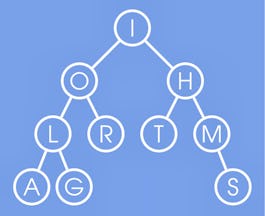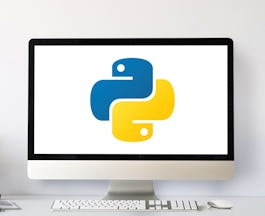369 results for "python data structures"

University of Michigan
Skills you'll gain: Computational Logic, Computer Programming, Computer Programming Tools, Critical Thinking, Data Analysis, Data Management, Data Structures, Problem Solving, Programming Principles, Python Programming, Software Engineering

University of California San Diego
Skills you'll gain: Algorithms, Theoretical Computer Science, Computer Programming, Data Structures, Problem Solving, Mathematics, Computational Thinking, Computer Programming Tools, Computational Logic, Critical Thinking, Graph Theory, Programming Principles, Mathematical Theory & Analysis, C++ Programming, Algebra, Software Testing

Skills you'll gain: Python Programming, Computer Programming, Data Analysis

Coursera Project Network
Skills you'll gain: Computer Programming, Data Structures, Python Programming

University of Michigan
Skills you'll gain: Computer Programming, Python Programming, Computer Programming Tools, Programming Principles, Data Structures, Computational Thinking, Computational Logic, Data Analysis, Software Engineering, Algorithms, Critical Thinking, Problem Solving, Data Architecture, Data Management, Database Application, Databases, Database Administration, Data Model, Data Visualization, Database Design, Database Theory, Web Development, Web Development Tools, Computer Networking, SQL, HTML and CSS

University of California San Diego
Skills you'll gain: Algorithms, Computer Programming, Data Structures, Theoretical Computer Science, Problem Solving, C++ Programming, Computer Programming Tools, Mathematical Theory & Analysis, Programming Principles, Mathematics

Google
Skills you'll gain: Computer Programming, Data Structures, Problem Solving, Python Programming

University of Colorado Boulder
Skills you'll gain: Algorithms, Theoretical Computer Science, Data Structures, Computer Programming, Graph Theory, Problem Solving, Computational Logic, Computational Thinking, Mathematical Theory & Analysis, Mathematics, Applied Mathematics, Python Programming

University of Michigan
Skills you'll gain: Computer Programming, Data Analysis, Data Management, Python Programming, Statistical Programming, Data Mining, Extract, Transform, Load, Critical Thinking, Data Structures, Exploratory Data Analysis, General Statistics

University of Michigan
Skills you'll gain: Python Programming, Data Analysis, Computer Programming, Machine Learning, Algorithms, Applied Machine Learning, Data Mining, Machine Learning Algorithms, Exploratory Data Analysis, Statistical Programming, Data Management, Extract, Transform, Load, Natural Language Processing, Critical Thinking, Statistical Machine Learning, Data Structures, Graph Theory, Network Analysis, Human Learning, Data Visualization, Network Model, Regression, Computer Networking, General Statistics, Network Architecture, Plot (Graphics), Visualization (Computer Graphics), Computer Graphics

Skills you'll gain: Data Analysis, Data Visualization, Python Programming
 Status: Free
Status: FreeUniversity of Toronto
Skills you'll gain: Computer Programming, Python Programming, Computational Logic, Problem Solving, Programming Principles, Computer Programming Tools, Critical Thinking, Computational Thinking, Algorithms, Mathematics
Searches related to python data structures
In summary, here are 10 of our most popular python data structures courses
- Python Data Structures: University of Michigan
- Data Structures and Algorithms: University of California San Diego
- Python for Data Science, AI & Development: IBM
- Python Data Structures: Coursera Project Network
- Python for Everybody: University of Michigan
- Data Structures: University of California San Diego
- Crash Course on Python: Google
- Foundations of Data Structures and Algorithms: University of Colorado Boulder
- Introduction to Data Science in Python: University of Michigan
- Applied Data Science with Python: University of Michigan










